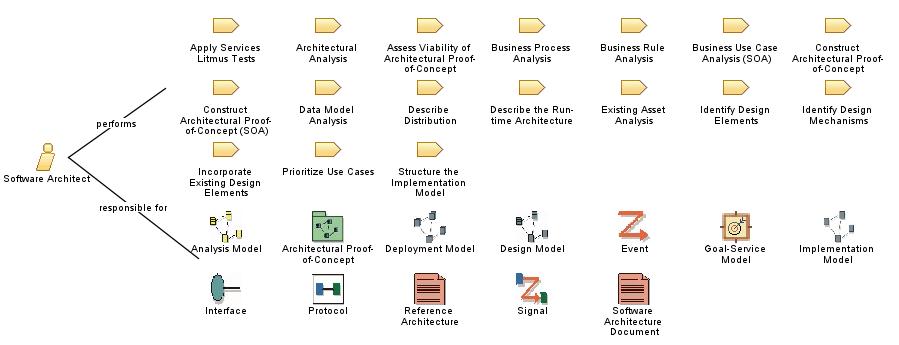| Skills |
"The ideal architect should be a person of letters, a mathematician, familiar with historical studies, a diligent
student of philosophy, acquainted with music, not ignorant of medicine, learned in the responses of jurisconsults,
familiar with astronomy and astronomical calculations." - Vitruvius, circa 25 BC
In summary, the software architect must be well-rounded, posses maturity, vision, and a depth of experience that allows
for grasping issues quickly and making educated, critical judgment in the absence of complete information. More
specifically, the software architect, or members of the architecture team, must combine these skills:
-
Experience in both the problem domain, through a thorough understanding of the requirements, and the
software engineering domain. If there is a team, these qualities can be spread across the team members, but at
least one software architect must provide the global vision for the project.
-
Leadership in order to drive the technical effort across the various teams, and to make critical decisions
under pressure and make those decisions stick. To be effective, the software architect and the project manager must
work closely together, with the software architect leading the technical issues and the project manager leading the
administrative issues. The software architect must have the authority to make technical decisions.
-
Communication to earn trust, to persuade, to motivate, and to mentor. The software architect cannot lead by
decree, only by the consent of the rest of the project. In order to be effective, the software architect must earn
the respect of the project team, the project manager, the customer, and the user community, as well as the
management team.
-
Goal-orientation and Pro-activity with a relentless focus on results. The software architect is the
technical driving force behind the project, not a visionary or dreamer. The career of a successful software
architect is a long series of sub-optimal decisions made in uncertainty and under pressure. Only those who can
focus on doing what needs to be done will be successful in this environment of the project.
From an expertise standpoint, the software architect also needs to encompass the Role: Designer
capabilities. However, unlike the designer, the software architect:
-
tends to be a generalist rather than a specialist, knowing many technologies at a high level rather than a few
technologies at the detail level
-
makes broader technical decisions, and therefore broad knowledge and experience, as well as communication and
leadership skills, are key.
|
| Assignment Approaches |
If the project is large enough to warrant an architecture team, the goal is to have a good mix of talents, covering a
wide spectrum of experience and sharing a common understanding of software engineering process. The architecture team
need not be a committee of representatives from various teams, domains or contractors. Software architecture is a
full-time function, with staff permanently dedicated to it.
For smaller projects, a single person may act as both project manager and software architect. However, if at all
possible, it is better to have these roles performed by separate people, in order to ensure that time pressure on one
role doesn't cause the other role to be neglected.
|

